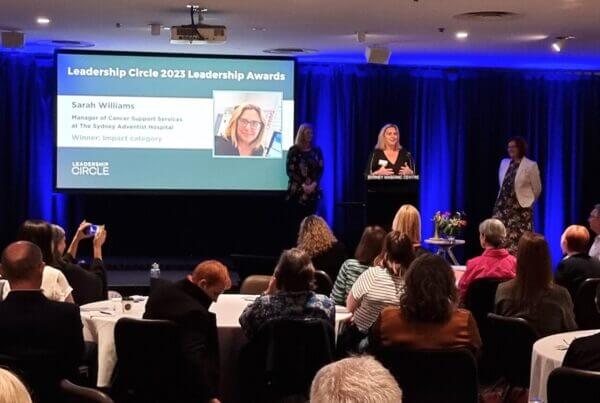Crisis Management— A Personal and Organizational Growth Engine
By Thomas Huang
When an organization is confronted with a crisis, leaders naturally shift to crisis management mode, doing everything they can to tackle the challenges at hand. While a clear focus on the crisis is understandable, and often effective, there are ways to increase the impact by engaging in leadership development.
As I lead an organization through two crises, my leadership team and I used the journey as a vehicle for transformation, coming out stronger than before. When shifting from a Reactive to a Creative mindset, the mobilizing energy in a crisis can be harnessed to grow the leadership in the organization. At the same time, these mindset and behavioral shifts naturally make for enhanced crisis management.
At the end of 2018, I was headhunted to take on the role of Managing Director, China, for an international renewable energy company. My mission was to steer the organization through an imminent crisis, turn it around, and improve operational performance within a year. As a former management consultant, this was similar to the kind of work I had done before. However, the times were unusual and the tasks at hand were tougher than I expected when I took on the new role.
The Chinese arm of the organization was divided into two camps, each living in its own reality. As a newcomer hired by headquarters, both camps looked at me with suspicion and distrust. It was quiet on the surface, but I had entered a warzone. Moreover, during the last ten years, and for various reasons, huge divides emerged between the China branch and the organization as a whole. As these divides grew, the physical distance, culture, and language barriers between teams made collaboration increasingly difficult, and at the cost of financial results. On top of all of this, my boss and main sponsor – the Group CEO – resigned on my first day.
My initial reaction was one of excitement and a strong desire to succeed. I focused my attention on learning the relevant technology, market, suppliers, and financial position. I had long dialogues with my leadership team to understand the pain-points, and where we should start to make improvements. Internally, I was worn down by the deep distrust permeating the organization. I was impatient and felt that I lacked control. I often found myself disengaged, and I remained critical in order to protect myself. I was acting out of fear, pushing myself into an increasingly autocratic behavior in an attempt to regain a semblance of control. Although I was leading through a crisis in the organization, I knew intuitively that I needed to start with myself. I needed an experienced executive coach, and my organization agreed to support my need.

My coaching journey started with a Leadership Circle Profile (LCP), which was leaning toward task-orientation and with the center of gravity in the “Controlling” dimension. The revelations were powerful and made a lot of sense to me.
Based on the insights from the LCP, my coach and I focused our energy on strengthening my ability to build trust, strengthen Authenticity, and experiment with vulnerability. Through coaching, I made conscious shifts in beliefs, thoughts, and behaviors that ultimately contributed to improving the organization’s performance. Gradually, I shifted my focus toward enabling and empowering my leadership team and my peers. These first steps helped me gain momentum as I saw how the organization reacted positively. The teams became more tightly integrated, communication improved, people expressed greater motivation and engagement, and the flow of red ink was stemmed.
This motivated me to grow even further as a leader, as I observed how the organization and I influenced each other in an upward spiral. Within months, we maneuvered successfully through an M&A process, reorganized the teams, enhanced our relationships with key clients and partners, optimized the value chain, and boosted our financials.
Then, in January 2020, we were hit by another crisis. Nobody could foresee the effects that the COVID-19 pandemic would have on each one of us. There were uncertainties about the extent and duration of the crisis, as well as concerns about the safety of our teams, and our families. At the same time, customers outside China struggled to understand the severity and the impact of the unfolding pandemic. In the early days, the range of possible future scenarios was broad. Without the scientific data to evaluate the likelihood of each scenario, we were left to our imagination. The fear in the organization was palpable and understandable. Fundamental stabilizing structures in our lives were being shaken, with knock-on effects that were all but clear. The leadership challenge was overwhelming on all fronts.
Learning from the internal turmoil that we went through last year, I spent a lot of time building awareness of my own thoughts, beliefs, and emotions. The positive journey we had started as an organization served as valuable preparation. I recognized my fear and the fear of others around me. It became apparent to me that we should not push the fear away, but embrace it and welcome it as a source of energy and motivation to act. Moving forward purposefully, I worked consciously to manage the emotions of myself and the team. Then we actively managed the emotions of the global organization, key customers, and partners. I further empowered the Chinese leadership team, nurturing a higher level of mutual trust, a sense of shared destiny, and full commitment to overcoming the obstacles together. The shared emotional ride created and strengthened bonds within the team. The Chinese organization quickly and effectively adapted to the realities and came out of the crisis stronger as a team.

As we overcame the initial phase of the crisis, I administered an LCP (see figure) exactly one year after the previous one. It showed clear improvements in terms of stronger relationship-orientation and a shift toward Creative mindsets and behaviors.
Reflections
Looking back on the two instances of crisis management that I went through during my tenure, I realize how they put me on a deeply transformative journey with long-term impacts on myself and the organization. The support I received from an experienced executive coach contributed greatly to accelerate my development.
No crisis is merely external; if it is a crisis, it is ultimately internal. The trigger for the crisis may be external, but the real crisis is internal – a sudden widening of the gap between required and actual performance in the leader and the organization. The crisis provides a change imperative with a tight timeline.
Organizational leadership in a crisis starts with self-leadership: seeing your Reactive Tendencies, acknowledging them, articulating them, and engaging with them. Harness the energy in fear. Deny or ignore your Reactive side, and it will control you.
The most important insight from my journey is the following: crisis management can be utilized as a personal and organizational growth engine. Psychologists hold that people who endure psychological struggle following adversity can often see positive growth afterward, and refer to this phenomenon as “post-traumatic growth.” Experiencing a traumatic event can have a transformational role in personality among certain individuals and facilitate growth. Analogously, an organization that goes through a crisis has the potential to grow.
Crises occur naturally during the life-cycle of an organization, whether triggered by internal turmoil or external shocks. Winston Churchill famously said: “Never let a good crisis go to waste.” Using a crisis as an opportunity has become a cliché, commonly understood as capturing the possible market upside in challenging times. While there surely are stories of market successes following crises, the outcome is highly uncertain and hard to predict.
Shifting the focus inward, leaders can choose to view the personal and organizational turmoil that comes with a crisis as a welcome imperative for strengthened collective creative leadership. The more uncertain the world seems, the bigger the change imperative, and a key question that leaders may ask themselves is: “What are the opportunities for leadership and organizational growth that we should pursue in this particular crisis?” More specifically, the following question may help to shape the planning process:
- Goal-setting: What are our goals for this crisis management process? Additionally, what development goals should we define, i.e. what are the “FROM-TOs” for individual leaders, the leadership team, and the organization?
- Staffing: What leadership roles and tasks are most critical in this crisis management journey? And who in the organization is ready to be stretched by taking on key roles in this journey?
- Support: What kind of support do the leaders need to both manage the crisis well and grow as leaders? This includes preparations and support during the crisis management journey.
Your organization may find itself struggling to find the time and resources to focus on this, asking: “Should we not concentrate all our energy in managing the crisis at hand?” But this is not an either-or; it is about shifting the mindset from the Reactive to the Creative dimensions on an organizational level. Empowering the leaders and focusing on growth will greatly enhance the ability to steer the organization through the crisis and the likelihood of having a stronger organization coming out on the other side.
While the storm is raging, the ‘gold’ can often be found within ourselves rather than somewhere out there. Leaders and organizations facing a crisis can benefit greatly from recognizing and realizing personal and organizational growth from effective crisis management.
Thomas is the Head of Mainland China at Agnus Consulting, a leadership development, enterprise transformation and corporate strategy consultancy. Previously, he has been working as a strategy consultant, entrepreneur, and leader of technology companies in Northern Europe and China. If you would like to connect with Thomas, you can contact him on LinkedIn.




